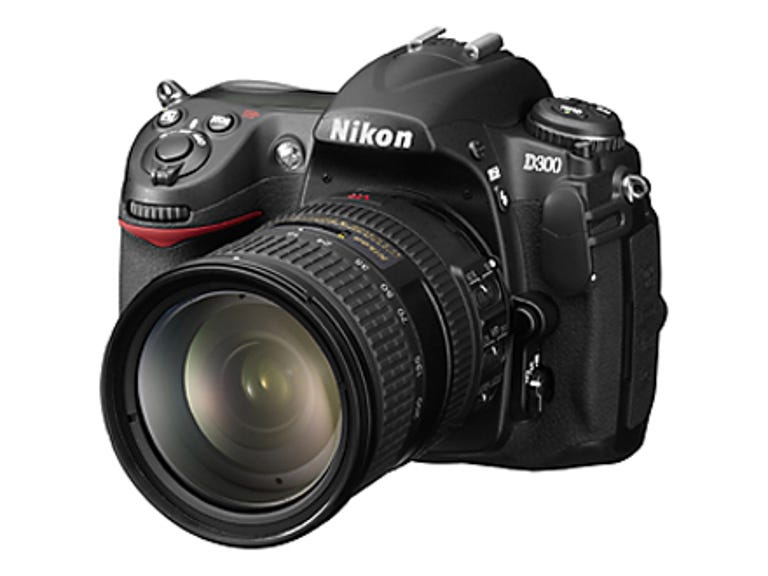 Why You Can Trust CNET
Why You Can Trust CNET Nikon D300 review: Nikon D300
At 825 grams, the Nikon D300 is more than heavy, but if you're a keen photographer and have an eye for detail, the D300 will prove itself with great image quality shot after shot. However, first time photographers and social-snappers might find this dSLR slightly overwhelming.
If you're looking to save money on a camera and weight-set for your home gym, then perhaps you may have found the right product in the Nikon D300. As large and bulky as this digital SLR is, one cannot just stop and stare at its size without staring at the great images it is capable of producing.
The Good
The Bad
The Bottom Line
The large size of the Nikon D300 is such that one can only assume it is to house the complex internal technologies that make each image so clear. Naturally it still requires a keen eye to make a good composition, though while using one of its three Automatic modes, the D300 still appears to preference the right settings to produce a clear, crisp image. The D300 may be an expensive camera for an amateur, but it's great tool for the well experienced photographer.
Design
Big. Don't take this the wrong way, but the D300 certainly not the kind of camera you can just slip in your handbag and whip out at a party. This camera has presence, in fact, it might have its own invitation to the party.
One advantage to the large body of this camera is the stability you can achieve hand held. Light cameras are subject to handshake, but this beast is like a shock absorber, and tends to subdue the severity of any shakes you may have when you nervously pull out a not-so-subtle camera and shove it in your friends face.
At the end of an evening of taking photos, your hand wont hurt thanks to the comfy large grip areas on the camera, but you might discover your biceps are larger than they were before you arrived.
Features
There are two quality scroll wheels on the right hand side of the camera which are your primary controls for aperture and shutter speed. Once you get used to which direction is "increase" and which is "decrease", you will be able to operate both settings simultaneously which makes quickly adjusting your shot very efficient.
All the settings are visible in the EVF as well as on the top-side LCD display, which always shows the number of shots left in the camera even when the camera is turned off. The ISO and Image Quality control buttons are accessible on the left of the camera, which saves changing them in the internal menu.
Despite the amount of room for all the switches and dials, your nose may tend to locate the four-way rocker switch when you go to take a photo, and inadvertently change your focus or aperture point. When your nose is not controlling the settings, you will find that four-way rocker an easy control mechanism for the extensive internal memory.
It is very easy to feel inundated with complex settings, which may deter a first-time photographer, but it does make fine-tuning your camera's settings down to the nth degree very doable.
Performance
The D300 really shows off its image quality when in low-light situations. With an ISO of 500, f-stop in the 2.8-4 range, and a shutter speed of around 1/30sec, night time party and street shots turned out well with a good balance of sharpness and exposure. Not to neglect its daytime performance, the D300 manages to squeeze off multiple shots very quickly in burst mode without compensating the image quality.
We were quickly disappointed when we attached the heavy wide-angle lens to the body and attempted to use the built in flash on the camera, as the bulbous physicality of the lens blocked the light from covering the entire image frame and we were left with a dark, semi-circle patch of image in the bottom 8th of the photo.
Image quality
As mentioned in the performance section, the image quality is phenomenal, and that is only at "high" quality. In order to maintain a good balance between the numbers of photos left in memory and the size/quality of the images, we did not run the camera at its maximum 12.3mpx setting, but chose the next option in the menu -- 10-megapixels -- instead. This reviewer doesn't intend on blowing any images up to poster size, but if you do, the D300 would be a perfect model for the job.
When zoomed close in on the photo, the sharpness of the image really stands out. Even in the softer low-light situations, the edges and fine lines don't blur into the background. When sat on a tripod and opening its depth of field wide open, the whole image is captured in pristine detail. One standout feature of the D300 is its colour saturation levels. Brilliant colours are achieved in high and low light environments.
If you don't mind a swinging around a large camera, enjoy playing with settings and speeds, and have an eye for detail then this camera will satisfy your hunger. On the other hand, if you just want something to casually to take photos with, and don't like to fiddle then perhaps start with a compact camera. The D300 compensates for its size and complexity with very impressive image quality.
